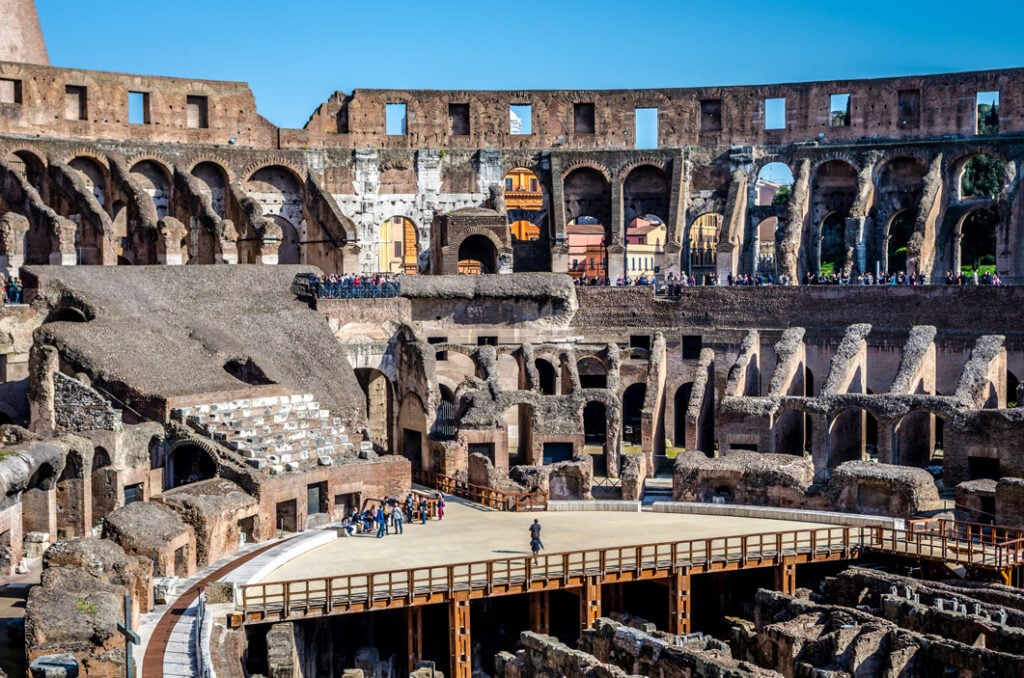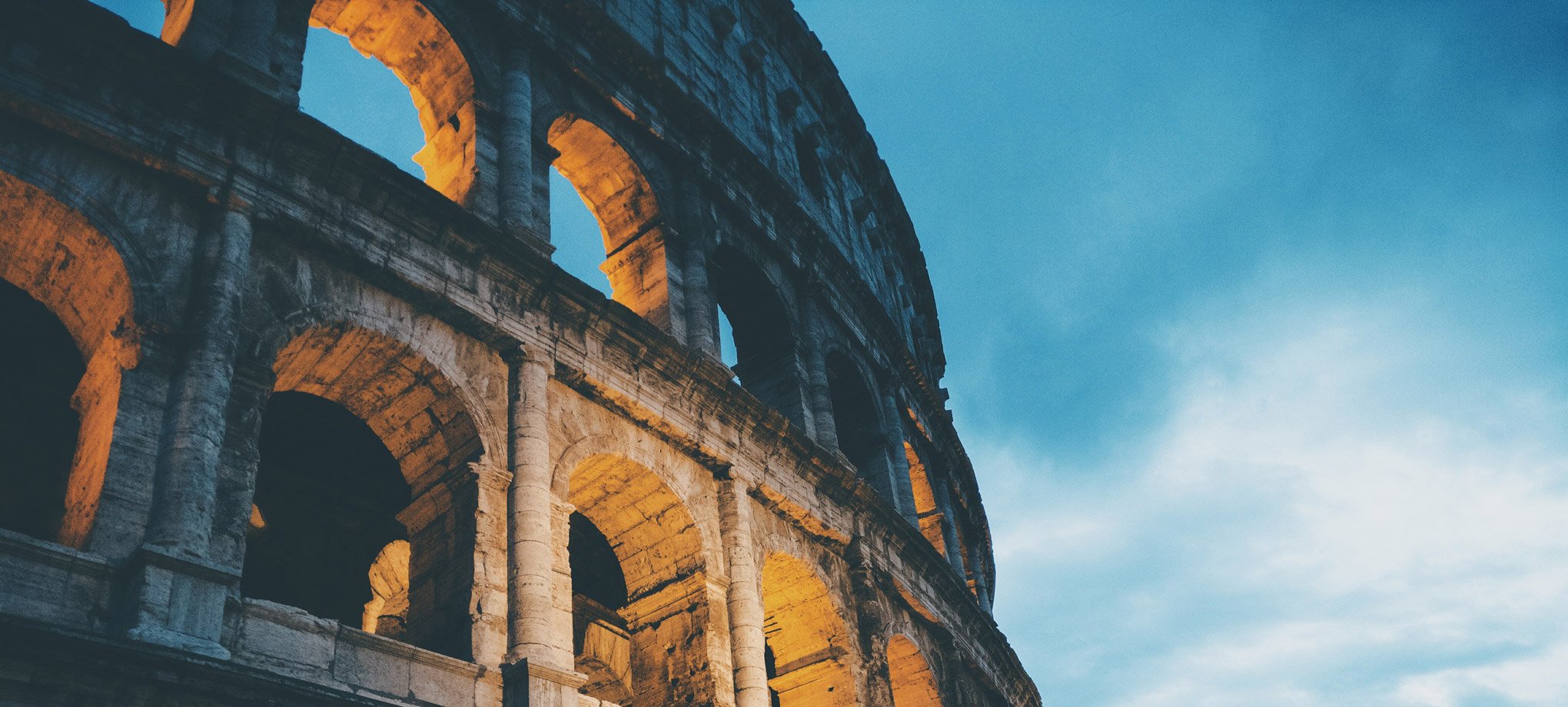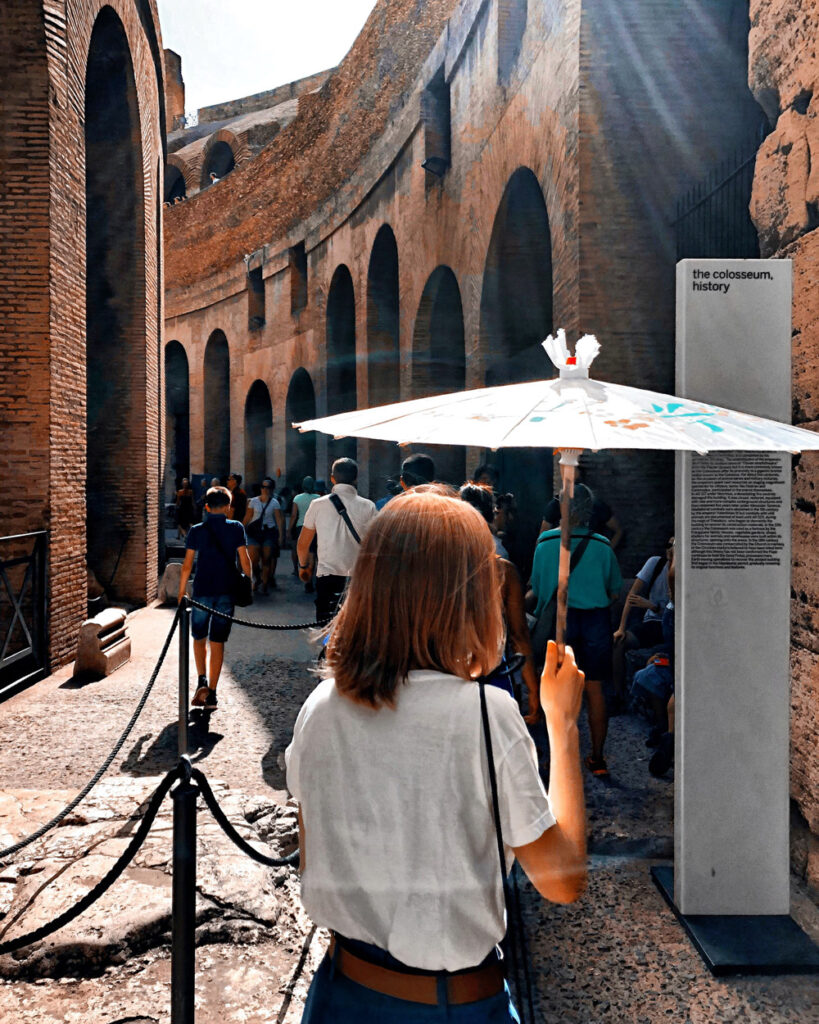RRome’s massive Colosseum is probably one of the first things you think of when you think of the Eternal City. The Roman architectural marvel and UNESCO World Heritage Site is probably the most recognizable landmark in Italy, aside from the Leaning Tower of Pisa and Vatican City.
City Experiences offers a handful of options involving the ancient arena. The Rome in a Day tour combines the Colosseum, the Vatican Museums, and the historic city center, while the Skip the Line: Premium Colosseum Tour also visits the Roman Forum and Palatine Hill.
The Gladiator’s Gate tour gives you special access to the arena floor, letting you retrace the footsteps of the gladiators from ancient Roman times. Two VIP experiences take you underground, where fighters and exotic animals were held before gladiator contests; one includes the Roman Forum and Palatine Hill, and the other takes you inside at sunset.

You won’t want to miss the exciting unveiling of additions to the tour.
A newly reimagined Underground Colosseum tour in Rome, allows visitors to experience the history of the Colosseum like never before. In partnership with the Parco archeologico del Colosseo (PArCo), this all-new exhibition and multimedia installation will transport visitors back nearly 2,000 years to Ancient Rome reviving the scenes of the passage of the gladiators from the tunnel that connected Ludus Magnus. The exhibit is now included as part of the Underground Colosseum tour and is on sale now! Read more here.
The newly enhanced exhibition, officially unveiled in Rome on 20 July 2023, showcases how Gladiators came from the Ludus Magnus – the gladiator training gym -through the underground secret tunnel to perform in the Colosseum Arena, acclaimed by more than fifty thousand spectators. Featuring a new sophisticated multimedia experience with holographic projections, those gladiators are brought to life depicting the walk on the original floor of the cryptoporticus towards to Arena in their colorful armor.
The enhanced exhibition offers a curated collection of armor on display along the tour path, along with the original artifacts from the collections such as the Parco Archeologico del Colosseo, the National Archaeological Museum in Naples, and the National Archaeological Museum in Aquileia with weapons distinguishing the main styles of gladiators competing for victory.
Here are some fun facts about the Colosseum—and its cultural significance during the ancient Roman Empire—to get you inspired for your visit to the Italian capital.
1. The Colosseum wasn’t always called the Colosseum
The Flavian Emperor Vespasian commissioned the Colosseum to be centrally built in Ancient Rome around 70 CE. His son Titus, later a Flavian Emperor, opened the arena in 80 CE with 100 days of gladiatorial games.
When Titus opened the arena, he christened it the Ampitheatrum Flavium (the Flavian Amphitheater) in honor of the Flavian Dynasty—the name “Colosseum” wasn’t associated with the structure until much later.

2. The Colosseum was erected atop a former lake
After Rome’s Great Fire of 64, the infamously brutal, pleasure-hungry Roman emperor Nero commissioned Domus Aurea (“Golden House”), a sumptuous pleasure palace that included, among other features, an artificial lake. After the suicide of Emperor Nero in 68 CE, the artificial lake was filled in, and the Colosseum was built on the same site.
3. The Colosseum was built using loot and slaves plundered from Jerusalem
After the brutal Roman siege of Jerusalem in 70 CE, Emperor Vespasian used materials stolen from a Jewish temple to build a massive amphitheater for gladiatorial events to entertain Roman citizens.
Built of solid concrete and stone, the Colosseum was entirely constructed using forced physical labor, deploying upwards of tens of thousands of Roman and Jewish slaves in the service of the Roman Empire.
4. The Roman Colosseum had the capacity to welcome mega crowds
You think sports arenas today can really pack ’em in like sardines? The Colosseum could smash just as many spectators inside, if not more. With seating a mere 14 inches wide per person, upwards of 50,000 spectators could cram into the Roman arena.

5. The Colosseum is the largest amphitheater in the entire world
An elliptical, freestanding amphitheater, the Colosseum measures approximately 510 feet wide, 157 feet high and 615 feet long, making it the largest arena ever constructed.
6. The ancient Colosseum had some 80 entrances
Spectators who came to watch the gladiatorial combat and hunts for wild animals could pour into the arena quickly, thanks to its massive size and 80-plus entrance portals.
7. Roman gladiator battles were often free-for-alls
Most of the massive gladiatorial combat fights and other events put on and funded by the Roman emperors themselves at the Roman Colosseum were free entry events. Sometimes free food was even dished up to spectators as a sign of generosity on the part of the emperors.
8. Gladiator battles weren’t the only skirmishes staged at the Colosseum
Once upon a time, it was possible to fill the arena with about three feet of water—just enough to stage elaborate mock sea battles that were wildly popular with ancients Romans.
The construction of the arena’s so-called Domitian—the underground network of passageways used to house gladiators, slaves, animals and supplies beneath the arena floor—essentially put a stop to the popular mock naval battles. The system was named after Emperor Vespasian’s first-born son, Domitian, who ruled as emperor from 81 to 96 CE, before the opening of the Colosseum.

9. The Colosseum wasn’t exactly animal-friendly
When the Colosseum opened in 80 CE, some 9,000 animals were killed during the arena’s inaugural ceremonies. And the massacre didn’t stop anytime soon thereafter. The Colosseum often staged wild-animal hunts and fights, massacring tens of thousands of captive beasts, including hippos, lions, tigers, bears, and even elephants.
10. The Colosseum began to collapse in the 5th century
As the Roman Empire began to decline during the 5th century, spectators began to lose interest in the Colosseum. It ultimately fell into neglect: Major parts of the Colosseum collapsed in the wake of natural disasters, such as thunderstorms and earthquakes, while vandalism did its part in turn.
 It wasn’t until well into the 18th century that the Catholic Church intervened in its preservation, with several popes joining in on conservation efforts.
It wasn’t until well into the 18th century that the Catholic Church intervened in its preservation, with several popes joining in on conservation efforts.
11. Italy has poured funds into preserving the Colosseum
After billionaire Diego Della Valle contributed some US$33 million in 2013 to restore the Colosseum’s arches, brick walls, and metal railings and to construct a new tourist center and café, Italian culture minister Dario Franceschini promised a whopping $20 million to assist in refurbishing the arena’s floor in 2015.
12. It’s a must-see for tourists and history buffs visiting Rome today
The most visited monument in Rome, the Colosseum draws around upwards of six million tourists a year.
Original post date : September 27, 2022

 Discover Experiences Near Me
Discover Experiences Near Me
